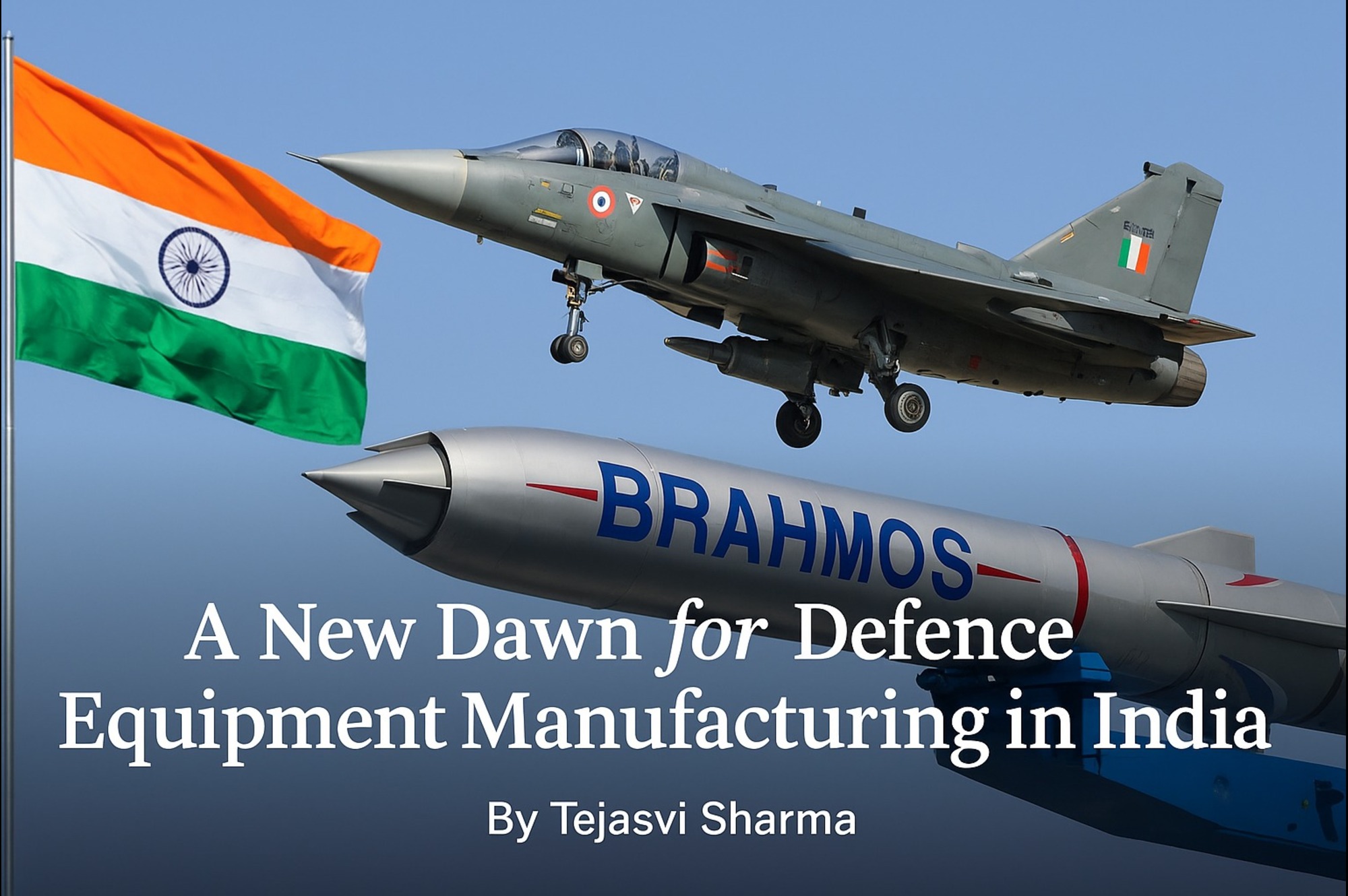A New Dawn for Defence Equipment Manufacturing in India
by Tejasvi Sharma, Editor-in-Chief, EPC World
In the early 2000s, as a prototype of the indigenously developed Tejas Light Combat Aircraft lifted hesitantly off the tarmac in Bangalore, few imagined that India, long dependent on imports for its defence needs, would one day become an exporter of advanced military hardware. That solitary test flight, though symbolic, marked the beginning of a quiet transformation. Two decades later, India stands on the cusp of a historic shift—from being the world’s largest arms importer to emerging as a credible and competitive exporter of defence equipment to the Global South.
This metamorphosis has not occurred by accident. It is the outcome of a strategic policy framework, visionary political leadership, and the quiet perseverance of public and private defence manufacturers who have spent years laying the groundwork for technological self-reliance. The clarion call of “Aatmanirbhar Bharat,” issued by Prime Minister Narendra Modi in 2020, did more than galvanise rhetoric—it restructured India’s defence procurement landscape and gave rise to a new doctrine: that sovereignty is deeply intertwined with self-sufficiency in critical defence capabilities.
With the launch of the Defence Production and Export Promotion Policy (DPEPP) in the same year, and the easing of foreign direct investment rules in the defence sector, the government opened the gates for a manufacturing renaissance. Strategic platforms were identified for indigenous development. Over 400 items were added to a negative import list. State support was extended to domestic firms through Make-I and Make-II frameworks, and Indian innovators were invited to challenge the monopoly of foreign suppliers.
Today, the result of that ambition is visible not only in the corridors of HAL, BEL, and BDL, but in the buzzing R&D centres of Tata Advanced Systems, L&T Defence, Adani Aerospace, and Bharat Forge. These companies, working both independently and with the Defence Research and Development Organisation (DRDO), have accelerated India’s push to develop not just military-grade equipment but systems with global export viability.
India’s defence manufacturing output reached ₹1.27 lakh crore in FY 2023–24, the highest in its history. But more telling is the scale of its exports—₹21,000 crore in the same fiscal year—marking a tenfold increase in less than a decade. This figure represents a profound change not just in quantity, but in perception. India is no longer viewed as merely a consumer of global weaponry; it is now an emerging alternative to the traditional defence powerhouses of the United States, Russia, France, and China.
What’s more, India’s defence exports are finding a ready and receptive audience among countries that have historically relied on Western military aid or Russian technology. In January 2022, the Philippines signed a landmark $375 million contract with India for the supply of the BrahMos supersonic cruise missile, co-developed with Russia. This was not just a sale—it was a message that India could supply high-end strategic weaponry to nations facing complex maritime threats, and do so at a fraction of the cost and with greater strategic neutrality.
In Armenia, Indian systems like the Pinaka multi-barrel rocket launcher and Swathi weapon-locating radar were deployed amid hostilities with Azerbaijan. The transaction symbolised something deeper: India’s entry into volatile geopolitical theatres as a supplier, not just an observer. In Africa, Indian naval systems, coastal radars, and fast interceptor boats have quietly reshaped maritime security capabilities in Mauritius, Seychelles, and Kenya. And in Southeast Asia, negotiations are underway with Vietnam and Indonesia for air defence systems like Akash and indigenous patrol vessels—military hardware tested in both Himalayan conflict zones and tropical maritime corridors.
This quiet but purposeful proliferation of Indian arms exports is beginning to stir the established order. For decades, the narrative of arms exports was shaped by the West—its moral posturing, its pricing power, and its political strings. India, with its doctrine of non-alignment and emphasis on technology sharing, is offering a different kind of partnership—one grounded in affordability, strategic autonomy, and sovereign cooperation.
The global arms trade is not just a market—it is a manifestation of power, trust, and influence. By stepping into this realm, India is doing more than just manufacturing helicopters or missiles; it is entering new diplomatic terrain, forging relationships built on mutual interest rather than dependency. But this path is not without resistance. Russia, long India’s largest defence partner, may not look kindly at New Delhi’s growing footprint in markets like Vietnam or Egypt. Western defence firms, witnessing India’s rise, may intensify price competition or push for exclusivity in critical contracts. Even allies like the United States, while welcoming India as a counterbalance to China, may hesitate to see it as a full-fledged arms competitor in their traditional spheres of influence.
Internally, India must also navigate the perennial challenges that plague its manufacturing ecosystem. Bureaucratic red tape, delayed payments, and lack of seamless integration between the public and private sectors still haunt the supply chain. More critically, India must invest in mastering frontier technologies—stealth, jet engines, AI-based battlefield systems, and cyber defence. Without leadership in these areas, the nation risks being a dependable supplier but never a dominant innovator.
And yet, the direction of movement is unmistakable. With every new contract signed, every prototype exported, and every flag-hoisting ceremony on foreign naval ships powered by Indian-built radars or torpedoes, the symbolism grows stronger. India is not just arming itself—it is becoming an enabler of regional security. Its defence exports today carry not just payloads, but ideology: that of a peaceful, independent, technologically sovereign global south.
This is not the India of yesteryear that waited in line for spares. This is an India whose BrahMos missiles protect the Pacific shores of Luzon, whose drones scout the deserts of Armenia, whose naval radars keep watch over the waters of Mauritius. In a world realigning itself into new geopolitical camps, India’s rise as a credible defence exporter is more than economic strategy—it is a declaration of intent.
A new dawn has broken, and India is not watching from the sidelines—it is writing the script.
Tags
















